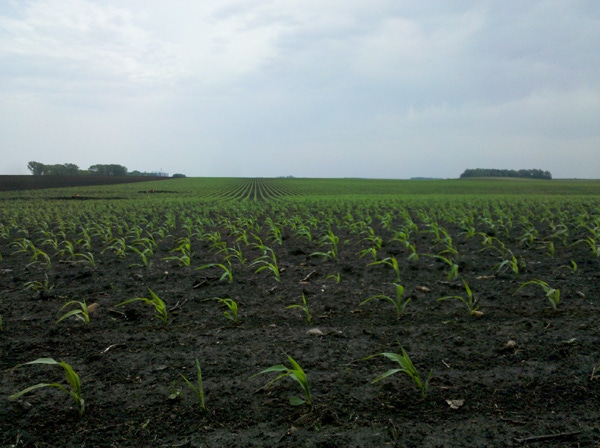April 16, 2013

A historical analysis of corn research shows that new hybrids are taking up more nitrogen than older plant varieties after the crucial flowering stage – a clue as to how plant scientists will need to adapt plants to increase yields.
Tony Vyn, a professor of agronomy, and Ignacio Ciampitti, a postdoctoral research associate, are studying the timing of nutrient uptake in corn and how that process affects yield. They found that modern hybrids (post-1990) took up 27% more total N from the soil after flowering than pre-1990 corn plants. In fact, N uptake after flowering in post-1990 hybrids averaged 56% of the total grain N at the end of the season.
Primarily, more grain N came from new N uptake from soil during grain filling, as opposed to N being remobilized from plant leaves and stems. The higher amount and duration of N uptake contributed to superior grain yields even as actual grain N concentrations declined.
The timing of N uptake is also important in understanding how other plant nutrients are affected. Vyn says optimum N levels increased plants' abilities to absorb phosphorus, potassium and sulfur. Part of the corn plant's response to receiving adequate N is that progressively higher percentages of total plant P, K and S end up in the grain fraction at harvest.
"You need to think in terms of nutrient balance. If you have a plant with more biomass and more yield, it will be taking up more nutrients in a balanced manner that shifts with plant needs and growth stages," Ciampitti says.
Post-1990 corn hybrids use N more efficiently, so less is necessary per unit of yield. But as those plants increase N utilization, they increase their uptake of other nutrients, which affects how much of those nutrients growers need to use and when they need to apply them.
Like what you're reading? Subscribe to CSD Extra and get the latest news right to your inbox!
"At some point, they'll need to increase the amount of these other nutrients applied to their fields as yields continue to increase," Vyn says.
Vyn and Ciampitti also found that the timing of nutrient uptake is important for predicting yield and nutrient efficiencies. Vyn says it would be economically beneficial to identify simple, early-stage plant traits that could be measured to predict final yield, but the earliest they could predict yield with even 50% certainty was at flowering – much later than hoped.
"It's desirable to estimate yield and nutrient efficiency of new genotypes at an early stage, but you have to wait until flowering time," Vyn says. "You need to wait until flowering stage for most of the total K uptake to be present in the plant and recognize that proportionally more P than N uptake can occur later in modern corn hybrids. But all nutrient uptake rates are dependent on the specific interactions of hybrids with their environment and management factors like plant density and soil nutrient availability."
Ciampitti says biomass and nutrients were measured for two weeks before flowering, at flowering and two weeks after flowering in an effort to predict yield. Those periods were crucial because it is the time in which most corn biomass is made in modern hybrids when water is not limiting.
The results of the studies were reported in two journal articles. The review of N source changes was published in Crop Science. Nutrient accumulation and partitioning results were published in Agronomy Journal.
You might also like:
6 Practices to get Corn Off to a Good Start
7 Steps for Managing Resistant Weeds
You May Also Like




